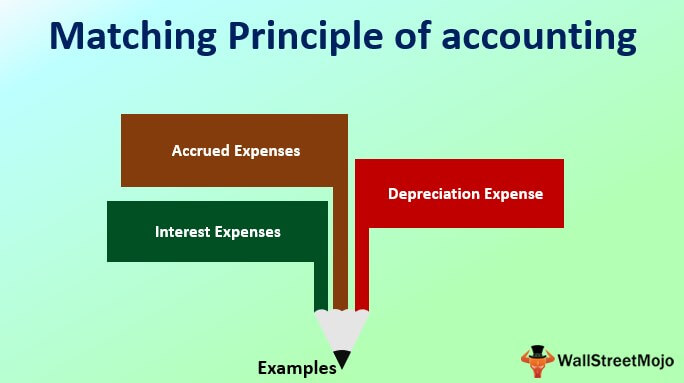
Ideally, they both fall within the same period of time for the clearest tracking. This principle recognizes that businesses must incur expenses to earn revenues. It should be mentioned though that it’s important to look at the cash flow statement in conjunction with the income statement.
What is the approximate value of your cash savings and other investments?
- Accordingly, they are charged as expenses in the income statement of the accounting period in which the salaries are paid.
- Another example is that the salesman in your company could earn some commission due to their sales performance.
- The matching principle, a fundamental rule in the accrual-based accounting system, requires expenses to be recognized in the same period as the applicable revenue.
- This means recognizing revenue when goods or services are delivered, ensuring that financial statements accurately reflect a company’s financial performance.
- First, that the revenue has been earned in the period in which it is included in the income statement.
If there is no cause-and-effect relationship, then charge the cost to expense at once. The matching principle states that you must report an expense on your income statement in the period the related revenues were generated. It helps you compare how much you made in sales with how much you spent to make those sales during an accounting period. In practical terms, if a company incurs expenses to generate revenue in a specific accounting period, the matching principle ensures that these costs are recognized in the same period, even if the actual payment occurs later.
What are Amortized Costs? (Amortized Cost Definition)
For example, when we sell the goods to our customers, the revenue increases and decreases the inventories. The reduction of the inventories corresponding to revenues is called the cost of goods sold. Unlock the potential of matching principle with the comprehensive Lark glossary guide. One of the most straightforward examples of understanding the matching principle is the concept of depreciation. This means that all resources needed to earn this revenue have been used, all steps needed to earn this revenue have been taken, and there is no apparent reason for this revenue not being received by the business.

What is your current financial priority?
For example, the entire cost of a television advertisement that is shown during the Olympics will be charged to advertising expense in the year that the ad is shown. Let’s say a company best bookkeeping boston, ma 2023 just incurred $100 million in Capex to purchase PP&E at the end of Year 0. PP&E, unlike current assets such as inventory, has a useful life assumption greater than one year.
Related terms and concepts to matching principle in accounting
For example, Radius Cloud sold $10,000 worth of products in December 2022 but incurred $5,000 in related expenses in January 2023. Without the matching principle, their financial statements would have been inconsistent. By recognizing those expenses in December 2022, they maintained consistency and accurately reflected the company’s financial performance. First, it minimizes the risk of misstating whether a business has generated a profit or loss in any given reporting period.
But by utilizing depreciation, the Capex amount is allocated evenly until the PP&E balance reaches zero by the end of Year 10. As shown in the screenshot below, the Capex outflow is shown as negative $100 million, which is an outflow of cash used to increase the PP&E balance. When a company acquires property, plant & equipment (PP&E), the purchase — i.e. capital expenditures (Capex) — is considered to be a long-term investment. Someone on our team will connect you with a financial professional in our network holding the correct designation and expertise. Our writing and editorial staff are a team of experts holding advanced financial designations and have written for most major financial media publications. Our work has been directly cited by organizations including Entrepreneur, Business Insider, Investopedia, Forbes, CNBC, and many others.
This practice provides a more faithful representation of the financial health of the business, facilitating better decision-making by management and offering stakeholders a transparent view of the company’s operations. For example, the cost of rendering service amount to $60,000 that occurred in February should be recorded as the expenses in February. Another example is that the salesman in your company could earn some commission due to their sales performance. Based on the Matching principle, the Cost of Goods Sold should record the period in which the revenues are earned. The accounting matching principle is a fundamental concept you’ll use forever in accounting.
There’s no way to tell if a larger space or better location improves revenue. Because of this, businesses often choose to spread the cost of the building over years or decades. Thank you for reading this guide to understanding the accounting concept of the matching principle. In 2018, the company generated revenues of $100 million and thus will pay its employees a bonus of $5 million in February 2019. The cost of the tractor is charged to depreciation expense at $10,000 per year for ten years.
The accrual method of accounting requires you to record income whenever a transaction occurs (with or without money changing hands) and record expenses as soon as you receive a bill. With the matching principle, you must match expenses with related revenues and report both at the end of an accounting period. Uncertainty arises when the outcome of a transaction is uncertain, such as in cases of potential legal disputes or contingent liabilities. Timing differences occur when the recognition of revenue or expenses is spread over multiple accounting periods due to factors like long-term contracts or installment payments. Uncertainty makes it difficult to predict transaction outcomes, while timing differences can lead to discrepancies between cash flows and their recognition in financial statements. The matching principle in accounting ensures that expenses are aligned with revenues in the same period, promoting consistency in financial statements and preventing the misrepresentation of financial results.
Leave a Reply